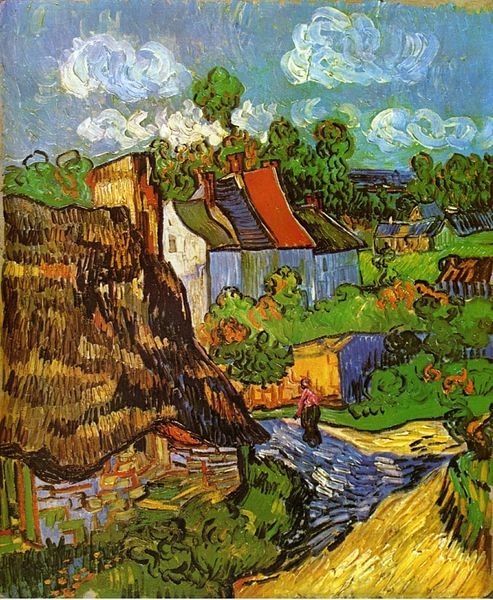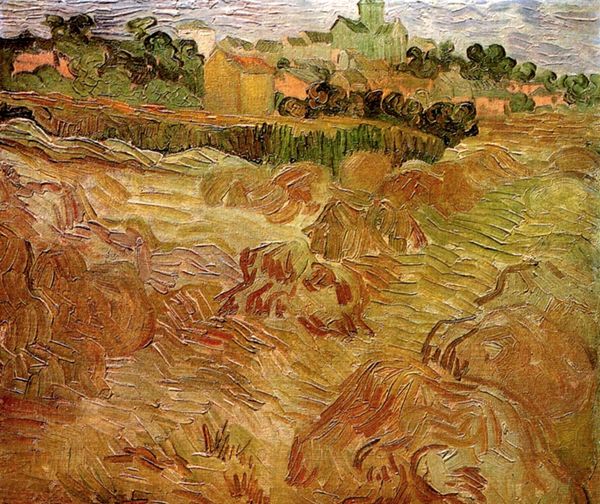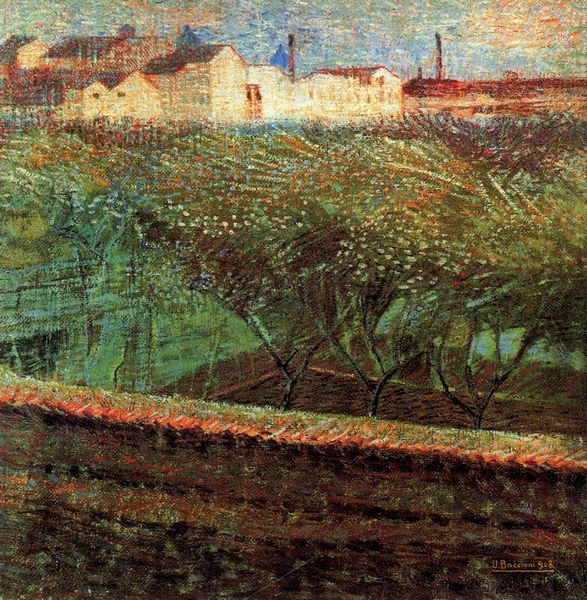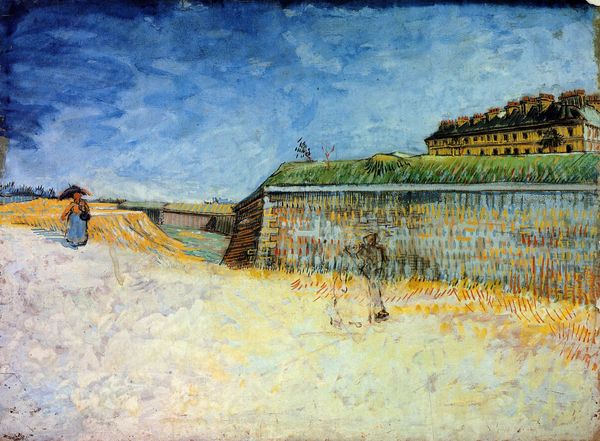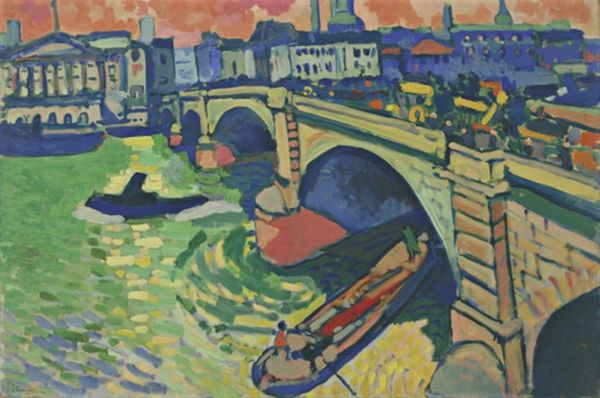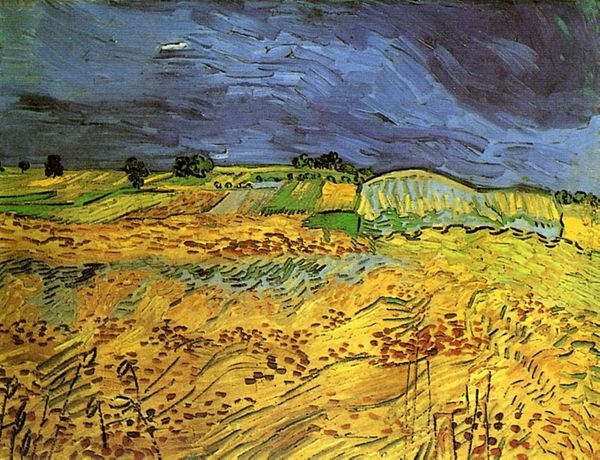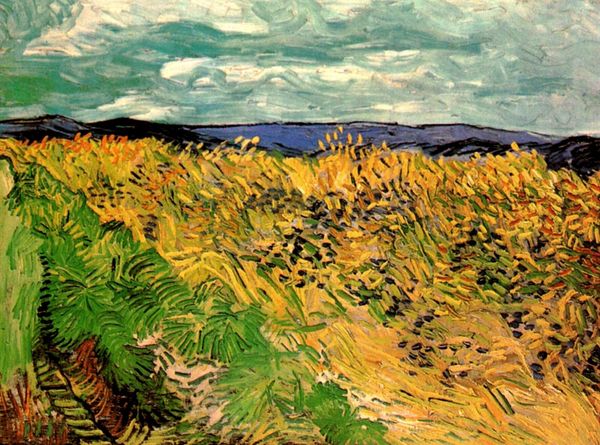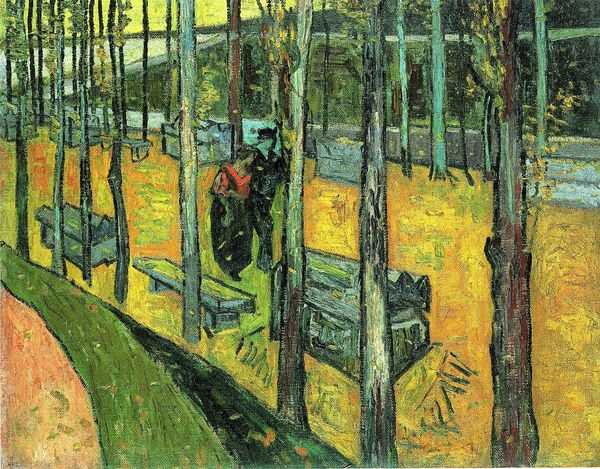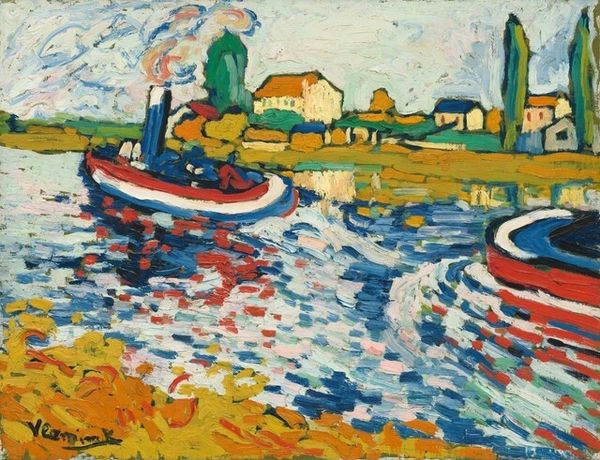
Dimensions: 60 x 74 cm
Copyright: Public domain
Curator: Here we have Vincent van Gogh's "The Roubine du Roi Canal with Washerwomen," created in 1888. Editor: My immediate reaction is a sense of contained energy. The brushstrokes are so vibrant and directional, almost feverish, yet the composition feels carefully structured. Curator: Indeed. Van Gogh uses bold strokes and juxtaposes complementary colors to build up a visual experience rather than just documenting the scene. Look at how the blues and yellows create vibrancy in the canal’s water. What does the canal evoke for you, given your expertise in iconography? Editor: Water often symbolizes the subconscious, a place of deep emotion and intuition. Seeing washerwomen adds another layer. They represent cleansing, both literally with the laundry, and metaphorically, perhaps purification of spirit or even a collective form of social catharsis. The painting then seems to negotiate personal turbulence against an objective labor. Curator: And this dichotomy is crucial. Van Gogh’s landscapes from this period often juxtapose symbols of industrial progress with natural elements and themes of rural life. Observe the factory complex on the horizon against the lively, expressive rendering of nature. The canal and bridge mediate that division. Editor: The smokestack, phallic in form, suggests the potent yet impersonal nature of the industrialized world against which the women are situated—the very embodiment of a connection to older, more relational lifeways. This image appears to be in constant dialog. Curator: Precisely. His composition suggests the ongoing tension between the modern world and established ways. But his brushwork gives primacy to the emotions this conflict produces. Van Gogh seems more interested in our subjective response. Editor: In observing the symbolic visual dynamics and its structural organization, it gives me pause to reflect upon how certain aspects of life become dominant narratives, overshadowing all else, and on art’s power to bring forth these cultural dynamics. Curator: A fascinating take, Editor. It is a compelling interplay, that of subjective experience and objective cultural dynamics, a key element that makes the artist's works eternally stimulating to analyze.
Comments
No comments
Be the first to comment and join the conversation on the ultimate creative platform.

